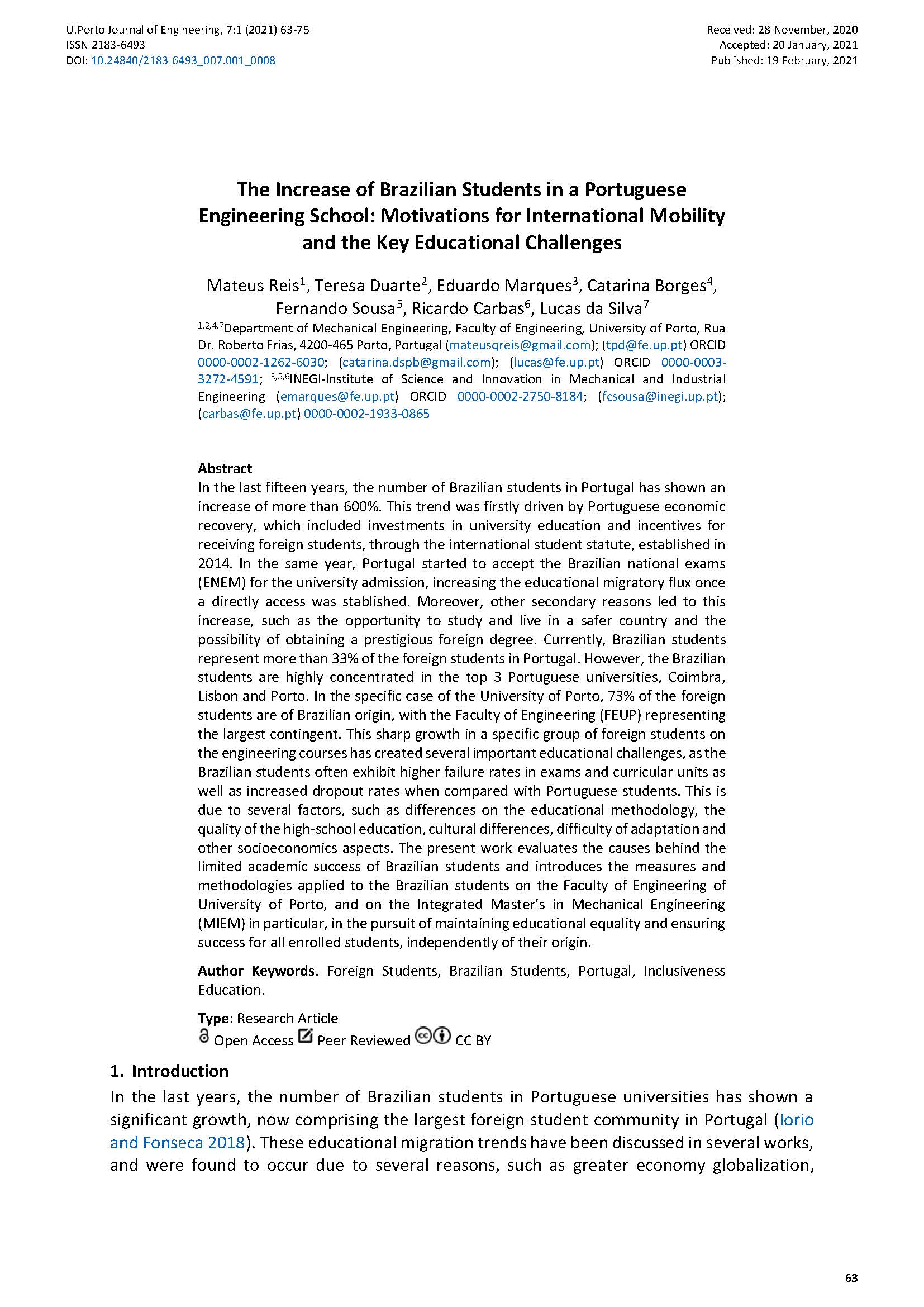The Increase of Brazilian Students in a Portuguese Engineering School Motivations for International Mobility and the Key Educational Challenges
Main Article Content
Abstract
In the last fifteen years, the number of Brazilian students in Portugal has shown an increase of more than 600%. This trend was firstly driven by Portuguese economic recovery, which included investments in university education and incentives for receiving foreign students, through the international student statute, established in 2014. In the same year, Portugal started to accept the Brazilian national exams (ENEM) for the university admission, increasing the educational migratory flux once a directly access was stablished. Moreover, other secondary reasons led to this increase, such as the opportunity to study and live in a safer country and the possibility of obtaining a prestigious foreign degree. Currently, Brazilian students represent more than 33% of the foreign students in Portugal. However, the Brazilian students are highly concentrated in the top 3 Portuguese universities, Coimbra, Lisbon and Porto. In the specific case of the University of Porto, 73% of the foreign students are of Brazilian origin, with the Faculty of Engineering (FEUP) representing the largest contingent. This sharp growth in a specific group of foreign students on the engineering courses has created several important educational challenges, as the Brazilian students often exhibit higher failure rates in exams and curricular units as well as increased dropout rates when compared with Portuguese students. This is due to several factors, such as differences on the educational methodology, the quality of the high-school education, cultural differences, difficulty of adaptation and other socioeconomics aspects. The present work evaluates the causes behind the limited academic success of Brazilian students and introduces the measures and methodologies applied to the Brazilian students on the Faculty of Engineering of University of Porto, and on the Integrated Master’s in Mechanical Engineering (MIEM) in particular, in the pursuit of maintaining educational equality and ensuring success for all enrolled students, independently of their origin.
Downloads
Article Details

This work is licensed under a Creative Commons Attribution 4.0 International License.
Authors who publish with this journal agree to the following terms:
- Authors retain copyright and grant the journal right of first publication with the work simultaneously licensed under a Creative Commons Attribution License that allows others to share the work with an acknowledgement of the work's authorship and initial publication in this journal.
- Authors grant the journal the rights to provide the article in all forms and media so the article can be used on the latest technology even after publication and ensure its long-term preservation.
- Authors are able to enter into separate, additional contractual arrangements for the non-exclusive distribution of the journal's published version of the work (e.g., post it to an institutional repository or publish it in a book), with an acknowledgement of its initial publication in this journal.
- Authors are permitted and encouraged to post their work online (e.g., in institutional repositories or on their website) prior to and during the submission process, as it can lead to productive exchanges, as well as earlier and greater citation of published work (See The Effect of Open Access).

